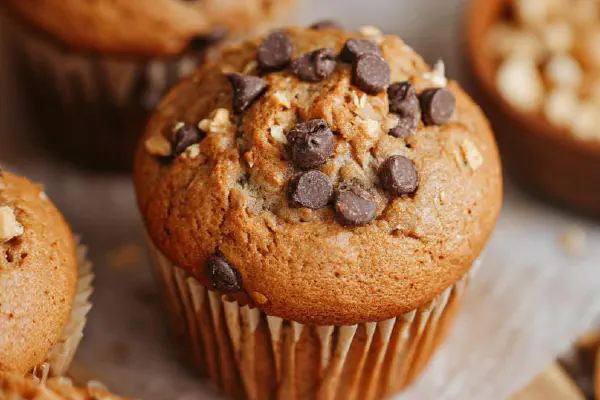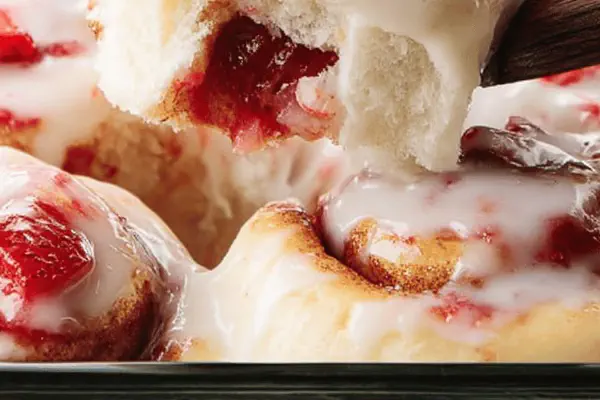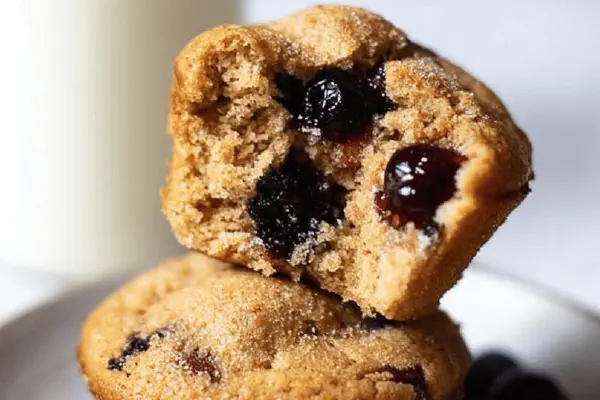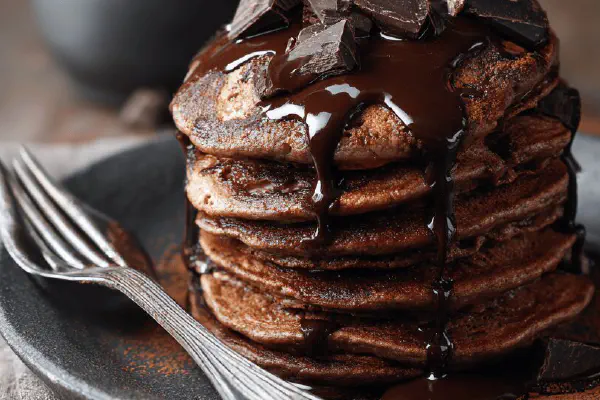Ham Cheddar Souffles
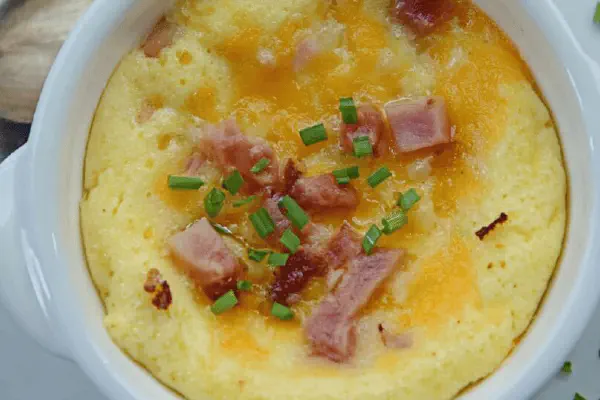
E
By Emma
Certified Culinary Professional
•
Recipe tested & approved
Light airy ham and cheddar soufflés built on a blond roux base folded with fluffy egg whites. Salt, nutmeg, and pepper season the thick milk mixture. Eggs whipped just right trap air, critical for rise. Bacon and sharp cheddar finish with punch. Six individual portions, each filling ramekins three-quarters full. Cook time flexible, reading visual cues and textures over clocks. Substitutions include gruyere or gouda, turkey ham, or spinach for freshness. Avoid overmixing whites or it all falls flat. Baking till fluffy tops rise golden. Serve straight from oven to catch the plate-perfect puff before sinking begins.
Prep:
17 min
Cook:
28 min
Total:
45 min
Servings:
6 servings
#souffle
#baking
#egg whites
#cheddar cheese
#ham
#American cuisine
Start with a humble blond roux, butter and flour cooked just shy of brown—the key base thick enough to hold a heap of milk and eggs. Then the egg yolks get whipped not to peaks but fluffy enough to lend richness without stealing the air from the whites. The whites—the soul of soufflé—whipped with cream of tartar till soft peaks hold their shape yet yield with a nudge. Fold them cautiously; don’t rush or your puff deflates. Toss in melty cheddar, salty ham, the smell already promising. Oven set low at 210 F, slow gentle heat coaxing a tender rise, golden crust forming. Timing’s a guide; watch puff, listen for the soft jiggle beneath firm tops. Fresh from oven with crispy bacon and chive on top—soufflé waits for no one.
Ingredients
- 3 tablespoons unsalted butter
- 4 tablespoons all-purpose flour
- 1 1/2 cups whole milk, warmed
- 1/2 teaspoon kosher salt
- 1/8 teaspoon ground nutmeg
- 1/4 teaspoon freshly ground black pepper
- 3 large eggs, separated
- 1/2 teaspoon cream of tartar
- 1 cup shredded sharp cheddar
- 1 cup diced cooked ham
- 1 tablespoon crispy crumbled bacon
- 1 tablespoon chopped fresh chives
- cooking spray
About the ingredients
Butter and flour must be measured precisely; too much flour makes a gummy mess. Warm the milk before pouring—it prevents lumps and speeds thickening. Eggs separate cold for easier whipping—shell bits ruin the mix fast. Cream of tartar crucial for stiff whites, but lemon juice works in a pinch. Ham diced small and evenly to distribute flavor, chip away moisture for a non-soggy mix. Cheese sharp but not overpowering; shred freshly if possible for better melt. Spraying ramekins prevents sticking; butter means richer flavor but oil is quicker. Ramekin size matters—too big and mixture spreads thin, no rise. Divide mixture evenly for uniform baking. Leftover soufflé rarely survives but use as savory pancake mix next day.
Method
- Heat oven to 210 degrees Fahrenheit. Not hotter don’t want cracking tops.
- Melt butter in saucepan over medium-low. Stir in flour until paste, cook 4 minutes stirring constantly. Should just start to turn blond, nutty smell. Roux forms base for thick creamy mix.
- Whisk in warm milk little by little, no lumps. Thickens fast. Salt, nutmeg, pepper join the party. Remove from heat once thick and glossy.
- In a bowl, beat egg yolks with fork or whisk until pale, light texture. Fold yolks into roux gently, then add cheddar and ham. Mix but no aeration here. Set aside.
- Egg whites next. Use cold whites if you can, they fluff more. Add cream of tartar for stability. Whip to soft peaks—not dry, not runny. Peaks should hold shape when scoop lifted but still droop slightly.
- Fold a third whites into cheese mixture first to loosen, then fold in rest with care. No stirring frenzy, or air escapes. Big, gentle sweeps, bottom to top, rotating bowl. Spot where white remains is ok.
- Spray six 4-ounce ramekins with oil or butter. Fill about 3/4 full. Will puff up but need room for rise—sloppy fills deflate or spill.
- Place ramekins on rimmed pan for easy transfer. Slide in oven center rack.
- Bake 25 to 33 minutes watching color. Tops puff, golden edges start forming. Tap gently ramekins—should feel set but with slight jiggle inside.
- Just before removing, sprinkle cheddar, bacon crumbles, chives on top. Return under broiler 1-2 minutes max for melty, crispy crown if you like fire touch. Watch like hawk or burn.
- Serve immediately. Puff peaks fall quickly with time. Soufflé doesn't wait for anyone.
- Substitutions? Gruyere or smoked gouda for cheddar swap adds layers. Turkey or prosciutto instead of ham works on quick notice. If no cream of tartar, lemon juice small pinch helps whites. Struggle with no rise? Check egg freshness, beat whites longer but watch dryness. Ramekins too big no rise; too small overflow.
- Leftovers deflate fast but make lovely savory pancakes day after.
Cooking tips
Heat your oven low—soufflés collapse with too much heat. Roux cooked just till blond avoids raw taste but keeps thickening power. Incorporate warm milk gradually to dodge lumps—one bad glob ruins all. Immediately off heat, yolks fold in, some risqué but manageable. Avoid mechanical mixers for folding egg whites in—hand fold to preserve air. Overmix and you’ll see deflated batter. Watch the color and jiggle rather than stopwatch—it’s alive, not machine-made. Hover near oven last five minutes to catch peaks turning golden. Topping with bacon and cheese last 2 minutes adds much-needed textural contrast. Serve piping hot to save puff before gravity does its work. Don’t despair if collapse happens—still tasty, just less showy.
Chef's notes
- 💡 Separate eggs cold for cleaner whites. Shell pieces kill volume fast. Whip whites with cream of tartar till soft peaks hold shape but droop slightly. Whipping too far makes them dry, no rise later; too soft means they collapse in oven.
- 💡 Fold whites with slow, wide strokes bottom to top; quick stirring breaks air bubbles. Add a third whites first to loosen cheese mixture—easier folding next. Spot of white left visible is better than overmixing and deflated puff.
- 💡 Warm milk little by little into roux off heat avoids lumps. Thick glossy texture signals good base; raw flour taste means too short cooking. Use unsalted butter; salted alters final balance.
- 💡 Ramekin size matters—too large means thin mix, no rise; too small overflow risk. Fill three-quarters full for room to grow. Spraying ramekins with butter adds flavor but cooking spray works. Even fills more uniform rise.
- 💡 Baking low temp (210 F) slow rise lets tender crumb form. Jiggle test near end—set outside with soft wiggle center means done. Overbake and air dries out, underbake and soggy center kills texture.
Common questions
Best egg whites for folding?
Cold whites easier to separate no yolk bits. Fresh eggs whip better. Cream of tartar stabilizes. Avoid plastic bowls or oily surfaces, they stop whipping properly.
What if soufflé falls after baking?
Happens. Could be overmixing whites or oven too hot. Timing off. Use fresh eggs. Big ramekins lose height, tiny spill over. Serve immediately; resting kills the puff fast.
Can I swap cheddar with other cheese?
Gruyere and gouda common. Smoked gouda adds aroma. Hard cheeses shred fine, melt evenly. Avoid watery cheeses or strong flavors that swamp eggs.
How to store leftovers?
Refrigerate wrapped tight. Reheat gently in oven or toaster oven to keep some lift. Alternatively, use cold soufflé batter for pancakes next day. Not same texture but nice savory flavor.
